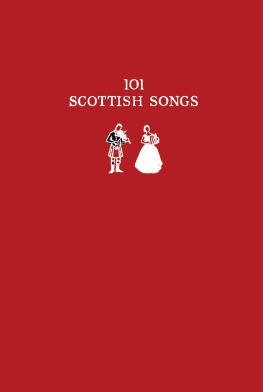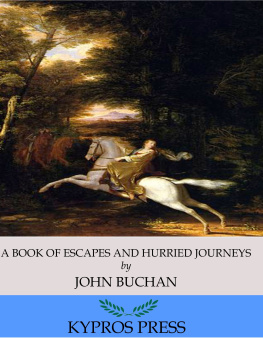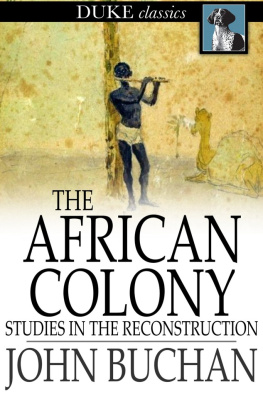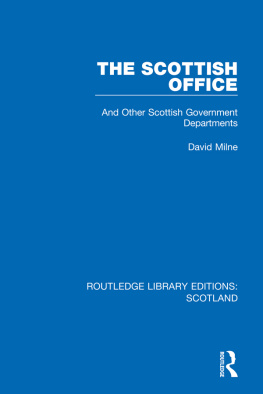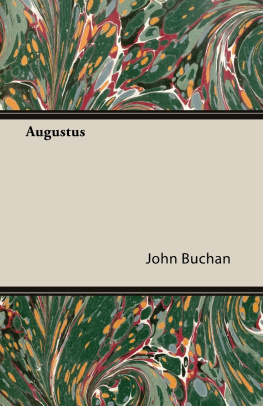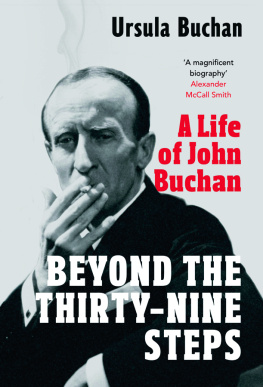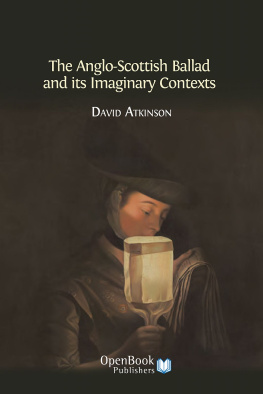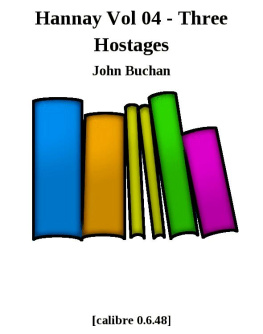ROUTLEDGE LIBRARY EDITIONS: FOLKLORE
Volume 12
A SCOTTISH BALLAD BOOK
A SCOTTISH BALLAD BOOK
EDITED BY DAVID BUCHAN
First published in 1973
This edition first published in 2015
by Routledge
2 Park Square, Milton Park, Abingdon, Oxon, OX14 4RN
and by Routledge
711 Third Avenue, New York, NY 10017
Routledge is an imprint of the Taylor & Francis Group, an informa business
1973 this selection and arrangement, introduction, notes, glossary: David Buchan
All rights reserved. No part of this book may be reprinted or reproduced or utilised in any form or by any electronic, mechanical, or other means, now known or hereafter invented, including photocopying and recording, or in any information storage or retrieval system, without permission in writing from the publishers.
Trademark notice: Product or corporate names may be trademarks or registered trademarks, and are used only for identification and explanation without intent to infringe.
British Library Cataloguing in Publication Data
A catalogue record for this book is available from the British Library
ISBN: 978-1-138-84217-5 (Set)
eISBN: 978-1-315-72831-5 (Set)
ISBN: 978-1-138-84383-7 (Volume 12)
eISBN: 978-1-315-73083-7 (Volume 12)
Publishers Note
The publisher has gone to great lengths to ensure the quality of this reprint but points out that some imperfections in the original copies may be apparent.
Disclaimer
The publisher has made every effort to trace copyright holders and would welcome correspondence from those they have been unable to trace.
The Scottish Series
A
Scottish Ballad Book
Edited by
David Buchan
Routledge & Kegan Paul
London and Boston
First published in 1973
by Routledge & Kegan Paul Ltd
Broadway House, 68-74 Carter Lane,
London EC4V 5EL and
9 Park Street,
Boston, 02108, U.S.A.
Printed in Great Britain by
T. & A. Constable Ltd
Hopetoun Street, Edinburgh
this selection and arrangement,
introduction, notes, glossary: David Buchan 1973
No part of this book may be reproduced in
any form without permission from the
publisher, except for the quotation of brief
passages in criticism
ISBN 0 7100 7566 9
To J. D. B. and E. A. B.
Now Im for no idle lairdies; every man has to work, if its only at peddling ballants; to work or to be wheeped; or to be haangit. (Hermiston in R. L. Stevenson, Weir of Hermiston).
Contents
Acknowledgments
For permission to print material, my thanks are due to the University of Aberdeen, for texts and tunes from the Greig MSS., to the Buchan Club and the University of Aberdeen, for texts from Last Leaves, to the curator, Broughton House, Kirkcudbright, for a text from the Kirkpatrick Sharpe MSS., to Harvard College Library for tunes from the Ritson-Tytler Brown MS., and to Professor Bertrand Bronson and Princeton University Press for his transcriptions of these tunes in The Traditional Tunes of the Child Ballads.
Introduction
As the ballads have always exercised a wide-ranging appeal it may not be unduly utopian to declare that this ballad book is designed for both the general reader and the more academic student. For the reader who reads for enjoyment there is here a fresh choosing of ballads, unencumbered by marginalia. For the ballad student who wishes to scrutinise this maverick of literary forms the texts are selected so that they can be examined in various perspectives.
In the first place, the material is selected from one regional tradition, that of the Northeast of Scotland, and for the most part from three tradition-bearers of that region. The material has been so chosen in the belief that ballads can be most rewardingly considered when located in place and time. In the past mystical notions about the folk have severely hampered ballad studies, and indeed other areas of Folklife Studies; it is now a truism of Folklife Studies that folk literature texts should be seen not in the context of a vague mystical Volk, but in the context of a specific regional or group culture: hence the individual ballad tradition. As with place, so with time; the ballads are most helpfully seen not in terms of a misty undefined past age but, at the very least, in the context of the period when the ballad-texts were recorded: hence the three tradition-bearers, whose texts were recorded in three different centuries eighteenth, nineteenth and twentieth. As, moreover, a tradition comprises individual singers or reciters, it makes good sense to begin a study of a tradition with the study of the individuals repertoires.
Why, then, the regional tradition of the Northeast of Scotland? The reasons are dealt with at some length in The Ballad and the Folk (Routledge & Kegan Paul, 1972), a book to which this anthology is complementary. Briefly, the Northeast provides a balladry unmatched in quality and quantity by any other regional culture in Britain. The Northeasts is also the only regional tradition where one can see clearly the three evolutionary stages of a ballad tradition: from oral to transitional to modern. The corpora of the three tradition-bearers Anna Brown, James Nicol, Bell Robertson represent these three stages, and in that of Anna Brown the Northeast tradition has the only sizeable corpus known to date of undoubtedly oral ballads.
That statement raises inevitably the thorny and basic question, What is a ballad? The short reply It is a narrative song that has been transmitted by tradition is not entirely satisfactory, as the processes of tradition have varied in response to social change. A longer, more satisfying, but more complicated account of the ballad has to take into consideration, first, ballad transmission, second, ballad-story, and third, ballad-text. General readers may prefer at this point to begin browsing in the lusher pastures of Gil Brenton.
The three stages of tradition correspond to a cultures periods of nonliteracy, initial literacy, and settled literacy. It is the degree or outright absence of literacy that determines the kind of composition and transmission employed by the folk at different times. The folk of the oral tradition were nonliterate and it is their method of composition and transmission that has given the distinguishing traits to what we normally think of as the ballads. Nonliterate people did not compose ballads as literate people compose poems, because the conditions of transmission differ appreciably in nonliterate and literate societies. In the latter, poems are transmitted visually, in print; in the former, ballads were transmitted aurally, from person to person. For the nonliterate singer the process necessitated his storing the material in the mind so that he could reproduce the stories readily in performance. The literate person, conditioned by the ways of his literate culture, will assume that the obvious method for dealing with this problem is rote memorisation of the heard text. Such, however, was not the way of the nonliterate singer. He learned both ballad-stories and a method of ballad composition, and in performance re-created the ballad-story by this method of composition to produce a ballad-text. Each performance, then, resulted in a freshly composed ballad-text.






